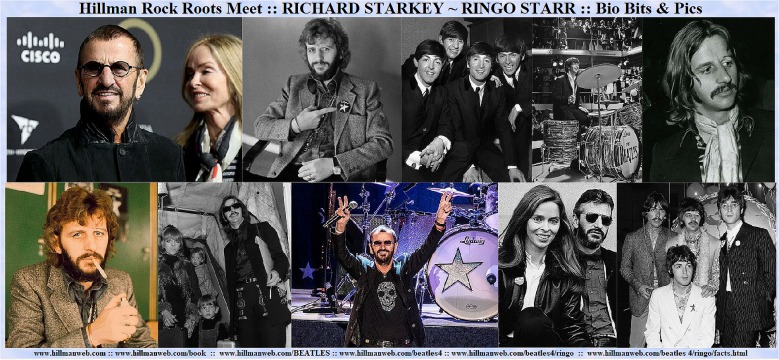
BILL & SUE-ON HILLMAN: A 60-YEAR MUSICAL ODYSSEY :: ROCK ROOTS
MEET RINGO STARR
Bio Bits
www.hillmanweb.com/beatles4/ringo/facts.html

Richard Who?
Often referred to as the most overlooked member of the Fab Four, Ringo Starr remains the most famous drummer of all time. It wasn't just his unique stage name that made him so renowned. Ringo's career choices, personality quirks, and rebellious attitude all lent to his impact on pop culture. So, who is he? While we may never know his mind's inner workings, we have some facts about the drummer's life that may surprise you. Let's start at the beginning.Oddly enough, Ringo could be considered the youngest and oldest when compared to his bandmates. Born Richard Starkey on July 7, 1940, in the Liverpool district of Dingle, Ringo was older than John, Paul, and George in age. However, when Ringo replaced Pete Best as the drummer, he became the last to join the group, making him its youngest member.
1
His Childhood Wasn’t Idyllic
Born the only child of Richard Starkey Sr. and Elsie Gleave, Ringo grew up in the rough and tumbled neighborhood of Dingle. His parents worked as confectioners making measly wages, so the family home remained in dire need of repair. Beatles biographer Bob Spitz later described the dilapidated abode as “a Dickensian chronicle of misfortune.” Ringo also commented on his neighborhood, saying that to survive, you “kept your head down, your eyes open, and you didn’t get in anybody’s way.”Richard Sr. and Elsie had a lively social life before Ringo was born. The couple loved to dance, often competing in swing and ballroom competitions. Though this shared passion took a back burner after the birth of their son, Ringo inherited their love for a good time, commenting later in life that he “lived in nightclubs for three years. It used to be a non-stop party.”
2
He Was a Mama’s Boy
Just as the dancing faded out of their life after Ringo was born, so did the romance between the couple. Elsie was a fiercely protective mother who fixated on her son and his well-being. “Big Ritchie,” as Ringo’s dad was affectionately called, missed their freedom and resented his son for the inconvenience. The rift between the couple ultimately caused them to file for divorce by the time Ringo was a toddler. Elsie was awarded custody, and “Big Ritchie” disappeared.Being a hardworking and devoted single mom, the relationship between Elsie and Ringo only grew stronger. The relationship with Big Ritchie, on the other hand, became nonexistent. The drummer claims he has no real memories of his father as he only saw him two times after the divorce. Instead of devoting his time to his family, Ringo’s father returned to his carefree pub-hopping existence.
3
A New Father Figure
Elsie and Ringo moved to the neighborhood of Admiral Grove. Though still in the lower-income area of Dingle, Elsie struggled to survive on the measly child support payments of 30 shillings per week from Big Ritchie. So, as most single mothers do, she worked several low-paying jobs before securing a position as a server at a local pub. Even with the meager paycheck, Elsie stayed in this barmaid position for 12 years.Despite her hectic schedule working and raising her son, Elsie met the man of her dreams, whom she married in 1954. Harry Graves was a gentle person who loved Ringo and his new wife. After realizing his stepson’s passion for music, Harry surprised Ringo with his very own drum kit in 1957. The former Beatle has said that he and Harry forged a loving relationship, claiming he “learned gentleness” from his “great” stepdad.
4
A Sickly Child
Elsie wasn’t the only one who struggled after the divorce; Ringo was faced with serious health challenges when he was just a boy. At the age of six, the child was rushed to the hospital due to appendicitis. Though the appendectomy was a routine procedure that went smoothly, Ringo developed peritonitis shortly after the operation. The inflammation of the abdomen was so severe that it caused his little body to fall into a coma that lasted for several days.Though he regained consciousness within a week, Ringo remained in the Liverpool Myrtle Street Children’s Hospital for twelve months to fully recover. After missing a full year of school while hospitalized, the ever-protective Elsie kept him home after his discharge in May 1948 so she could keep a watchful eye.
Another Educational HurdleBecause of his illness, by age eight, Ringo remained illiterate and struggled with mathematics. His educational inadequacies revealed themselves in the classroom, leaving the boy feeling alienated and embarrassed. Frustrated, he often cut classes to hang out in Sefton Park. When Elsie got wind of her son’s struggles, she enlisted the help of Marie Maguire Crawford, a neighbor, and close friend.
5
After a year of tutoring twice a week, Ringo was back on track academically, only to be faced with another health crisis. In 1953, the former Fab Four star contracted tuberculosis, requiring a two-year stay in the sanatorium. As you can imagine, this was a massive hurdle for Ringo’s education. Having to constantly try and catch up with his classmates made going to school a dreaded chore. Luckily, at the secondary level, he discovered courses in the arts.
6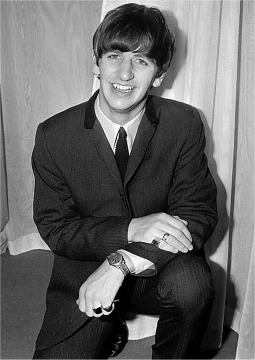
His Love for Music
Of course, contracting tuberculosis and being admitted to a sanatorium for two years wasn’t an ideal existence for a young lad; however, it was in that hospital that Ringo discovered his love for drumming. The medical staff encouraged the patients to join the hospital band to stimulate their motor activity and alleviate their boredom. Because it was a low-income facility, they couldn’t supply actual instruments, so they improvised.The most famous drummer in the world initially learned to keep a beat by using a makeshift mallet constructed from a cotton bobbin to bang on the cabinets adjacent to his bed. His neighbor and tutor, Marie, increased his interest in the instrument by gifting him a copy of Bedtime for Drums by Alyn Ainsworth. Ringo commented on his hospital band, saying, “That's where I started playing. I never wanted anything else from there on.”
7
Back to the Real World
Upon his release from the sanatorium in late 1955, Ringo returned to the polluted and violent district of Dingle. Like most in his neighborhood of Admiral Grove, his family was struggling financially, fearing the chill of winter approaching. It was time for Ringo to get a job. After several failed attempts to hold down employment, the drummer came up with a new idea that would kill two birds with one stone.
Winter was approaching, and there was a definite chill in the air. In need of new clothes he could not afford, Ringo applied for a position with British Rail. As a railway worker, he should be issued a uniform. Though the company did offer him a hat, Ringo failed the physical examination requirement and was laid off before he started. However, there was a silver lining; he walked away from the opportunity eligible for unemployment.
8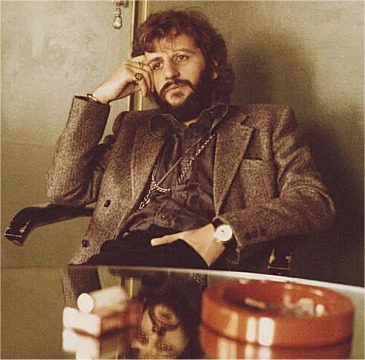
Musicians Will Be Musicians
Ringo didn’t milk his unemployment benefits for long as he landed a job as a waiter soon after leaving British Rail. This new position had him serving drinks onboard a day boat that carried passengers from Liverpool to North Wales. Though he enjoyed the work, Ringo soon realized that his sea legs may be noticed by the Royal Navy, who were still conscripting men for service.His second failed employment opportunity prompted his stepdad to secure him a position as an apprentice machinist for his company, Henry Hunt and Son. There, Ringo bonded with his co-worker Roy Trafford over their shared passion for music. The two young men used the manufacturing plant’s cellar as the pseudo-rehearsal space, performing skiffle renditions of popular songs. With the addition of co-worker and guitarist Eddie Miles, the men formed a threesome, creatively named the Eddie Miles Band.
9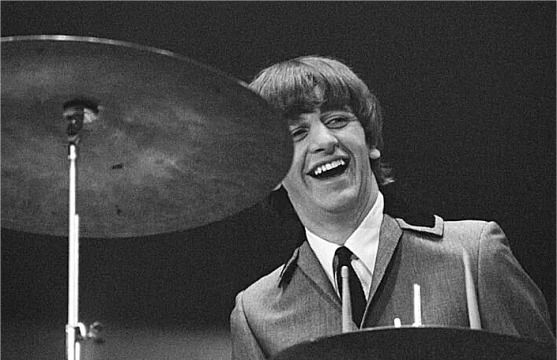
Becoming Ringo Starr
By November 1959, Ringo was ready to leave the basement of the manufacturing plant and play on the stage in front of an audience. He had made a name for himself by then within the pub scene of Liverpool, though he rarely drummed for a public audience. Al Caldwell’s band, the Raging Texans, were transitioning from performing skiffle to playing rock and roll, so they needed an additional member with a full drum kit. With Ringo on board, the band became well-known as the Hurricanes.Oddly enough, Ringo wasn’t known as Ringo before joining the Hurricanes. Knowing his new band had a following from their days as the Raging Texans, he chose his surname because of its country-western flare. As for his first stage name, it was inspired by his favorite choice of jewelry, his rings.
10
Crossing Paths
Recruiting Ringo Starr as their drummer proved to be a wise decision for the former Raging Texans. Their transition from skiffle to rock and roll as the Hurricanes made them one of the most successful bands in Liverpool. So successful that they were soon in high demand in other European countries. After performing abroad in France, the members embarked on a German tour in 1960, with their first stop being in the city of Hamburg. There, Ringo first met the quirky threesome, John Lennon, George Harrison, and Paul McCartney.Ironically, when the Fab Four first met, it was Ringo who was the most in-demand musician among the lot. As the drummer for the Hurricanes, his band held top billing and was paid a much higher wage. George, John, and Paul were not only impressed by Ringo’s ability, but they were also a little star-struck.
11
Causing Controversy
Any Beatles fan knows the band's original drummer was Pete Best. He was not with John, Paul, and George when they first met Ringo, nor was he told they were looking for his replacement. After working together on a couple of projects, Ringo accepted John Lennon's invitation to join the band on August 14, 1962. Two days later, manager Brian Epstein gave Pete the ax, saying, "I've got some bad news for you. The boys want you out and Ringo in."Unexpectedly, the fans of the band were outraged. They held vigils outside of the clubs, shouting, "Pete forever! Ringo never!" Aside from the unwelcoming chant, things also got physical. George Harrison was punched in the face, resulting in a black eye, and Brian Epstein's car had its tires slashed. Despite the initial anger, Ringo won the fans over by November 1962; they now wanted to hear him sing.
12
On August 18, 1962, drummer Ringo Starr made his debut with The Beatles at the horticultural society dance, Birkenhead, England, just two days after Pete Best was dismissed from the group, having had a two-hour rehearsal in preparation. This was the first appearance of The Beatles as the world would come to know them: John, Paul, George, and Ringo.Starr, who had been poached from Rory Storm and the Hurricanes, was no stranger to the Beatles. He met them back in 1959 and occasionally sat in with them over the years when Best was unable to make it. When discussion about firing Best began, it was George Harrison who lobbied for Ringo. "To me it was apparent," he said in Anthology. "Pete kept being sick and not showing up for gigs so we would get Ringo to sit in with the band instead, and every time Ringo sat in, it seemed like 'this is it.' Eventually we realized, 'We should get Ringo in the band full time.'"
Even though the Beatles had already become the first band from Liverpool to have a recording contract, they were nonetheless in awe of Starr. "We really started to think we needed 'the greatest drummer in Liverpool,'" Paul McCartney said, also in Anthology. "And the greatest drummer in our eyes was a guy, Ringo Starr, who had changed his name before any of us, who had a beard and was grown up and was known to have a Zephyr Zodiac."
The gig went off without incident, but by the next day, news of Best's firing had made its way through the city. Their evening slot at the Cavern was marked by protests from Best's fans – judged to be about half the crowd – who had objected to the decision. Harrison was even attacked in the hallway between the band room and the stage, which gave him a black eye.
~ Ref: John Einarson
A Confidence Shaker
Though Ringo had already made quite a good impression on his bandmates, he struggled to win favour with the Beatles' producer George Martin. His first recording session as their drummer occurred on September 4, 1962. Later, Ringo recalled George's reaction, saying the producer thought he "was crazy and couldn't play … because I was trying to play the percussion and the drums at the same time; we were just a four-piece band."Instead of confronting the concerns head-on, Ringo was demoted at the second session to tambourine and maraca player, while studio musician Andy White replaced him on the drums. Suddenly, his confidence was shaken. Ringo remembers thinking, "That's the end; they're doing a Pete Best on me." George Martin later explained his decision, saying, "I simply didn't know what Ringo was like and I wasn't prepared to take any risks."
13
A Rollercoaster of Emotions
Ringo’s rocky start with producer George Martin soon smoothed itself out. By 1964, the band had gained such momentum that their merchandise was selling off the shelves as they prepared to embark on a tour of Denmark, the Netherlands, Asia, Australia, and New Zealand. Unfortunately, Ringo was hit with yet another mysterious bout of illness just before the tour.The drummer spiked a high fever and was diagnosed with pharyngitis and tonsillitis just as the band was preparing to leave for the first leg of their journey. Though he was only hospitalized briefly, Ringo was instructed to recover at home, not on the road. Unable to stop the tour, session drummer Jimmie Nicol stepped into his shoes for five of the concerts. Being replaced, even temporarily, terrified Ringo, so as soon as he was discharged, he rejoined his bandmates in Melbourne against the doctor’s orders.
14
A Doomed Marriage
As the Beatles were on the verge of superstardom, Ringo became smitten with one of their biggest fans, a young hairdresser named Maureen Cox. Maureen was delighted to be the object of the drummer’s affection. After all, he was an up-and-coming rock star with a devilishly charming personality. They were wed in 1965, with no idea of the rocky road ahead.You see, Ringo was ill-prepared for stardom. He had never been wealthy or famous, so when the Beatles blew up, the drummer began to abuse alcohol and drugs. Lovesick fans didn’t help matters either. Knowing she had landed one of the Fab Four, jealous groupies started harassing and threatening Maureen. Ringo didn’t come to her defense; instead, he treated Maureen the worst of all, later admitting he was “a drunk, a wife-beater, and an absent father.” Despite having three children together, the couple divorced in 1975.
15
Distracted by Danger
Maureen wasn’t the only one being threatened by obsessed fans; the members of the band also received some disturbing messages. As Beatlemania reached its peak in 1965, Ringo went into panic mode when he received a death threat via telephone just before he was due to perform onstage at a Montreal show. The call was so convincing that the drummer feared for his life, even repositioning the cymbals on his kit to sit vertically to protect him from a bullet.Feeling the pressure to constantly protect themselves from potential assassins quickly took its toll. Ringo recalled, "We were turning into such bad musicians ... there was no groove to it." In addition to the threats, the mania of fans surrounding them was overwhelming. John, Paul, and George seemed to handle the stress just fine. Ringo? He felt afraid and alone.
16
Branching Out
Part of the reason Ringo felt so isolated was because of the direction the Beatles’ music was heading creatively. John, Paul, and George were steering away from traditional rock and roll, writing songs that no longer required a drumming accompaniment. As he passed the time in the studio playing cards with their road manager, his bandmates were recording new tracks without him.Luckily for Ringo, the fans got involved. A letter published in Melody Maker suggested that their beloved drummer be more involved in the vocals. Though Ringo was happy singing backup, the band agreed to feature his voice as the lead on the iconic song Yellow Submarine. To their delight, the song quickly rose to number one on the British music charts. Up next was Sgt. Pepper’s Lonely Hearts Club Band, a project everyone was excited about, except for Ringo.
17
Trying It Solo
Though Ringo rocked the lead vocals on With a Little Help from My Friends, the long hours spent on Sgt. Pepper only created more resentment. For John, Paul, and George, the album was revolutionary, a testament to their diversity as musicians. Ringo, on the other hand, felt like a session musician rather than a vital member of the band. The more alienated he felt, the less input he offered when composing new material.While this silent storm was brewing, Beatles' manager Brian Epstein died unexpectedly from an overdose. Ringo recalled, "[It was] a strange time for us when it's someone who we've relied on in the business, where we never got involved." This melancholic period led the drummer to try something on his own. And so, he became the first Beatle to perform without his bandmates alongside Cilla Black on her self-titled BBC program.
Angered by Paul’s overbearing attitude, John’s passive-aggressive behavior, and the unsolicited suggestions from Yoko Ono, Ringo quit the band and went on vacation. Two weeks later, he returned to find that George had decorated his drum kit with flowers as a peace offering. The warm gesture only kept the peace for so long. John announced he was done on September 20, 1969, and Paul did the same on April 10, 1970. Though Ringo initially felt alienated, he was the only one to step in as a mediator, hoping to persuade everyone to stay.
18
The Beginning of the End
Determined to make things work, Ringo agreed to join his bandmates at the ashram of the Maharishi Mahesh Yogi in India to help compose the songs for their now famous White Album. Again, tempers flared, causing Ringo to leave just ten days after their arrival.
19
What Now?
After travelling to Scotland to convince Paul to reconsider, it became apparent to Ringo that his days as a Beatle were over. Following the breakup, his bandmates became quite successful in their new ventures, solo and collaborative. Ringo approached EMI Records, the Beatles’ former label, hoping for a solo deal; their answer was an astounding NO!Though the drummer is often criticized as being the least involved member of the Fab Four, the truth is that Ringo was a key contributor to their music. He was the first to comment, “it’s been a hard day’s night,” which later led to a hit song and a feature film. Ringo’s refusal to eat octopus on vacation inspired him to write Octopus’s Garden, another fan favorite still played today. So, being slighted by EMI after his profitable contributions to the Beatles’ catalog felt like a slap in the face.
20
No Hard Feelings
Despite feeling alienated, Ringo loved his bandmates. He happily collaborated with them on their solo projects and came to their aide in times of need. The relationship between Yoko and John has been blamed for the Beatles’ breakup for decades. Even so, Ringo has always supported their love, even offering them his London apartment during John’s divorce. Though John’s tragic murder cut him to the core, Ringo hopped a plane to New York to comfort Yoko while she grieved.So, it’s no surprise that Ringo remained tight-lipped about his dear friend John and his relationship with Yoko. He rarely spoke his name until 2019, when he received a touching gift that still brings him to tears, an old demo recorded by his dear friend just before he died. At the beginning of the track, John mentions the drummer, saying, “Hey, Ringo, this’d be great for you.”
21
Ready, Set, Action!
Ringo was introduced to acting while he was still in the Fab Four, though in most of those films, he played the Beatle version of himself. Critics praised his acting debut in A Hard Day’s Night, comparing his silent comedy to that of Charlie Chaplin. Oddly enough, Ringo had no lines in the film because he was too hungover to remember them. Even so, his performance was notable, opening notoriously locked doors in Hollywood after the Beatles’ breakup.Like his bandmate George Harrison, Ringo adored Monty Python. When the comedy troupe got word that he was a fan, they made Ringo a guest star on their BBC comedy series Monty Python’s Flying Circus. In total, the drummer co-starred in ten Hollywood films. Though the quality of those films is debatable, his most beloved role was in the quirky comedy Caveman.
22
It Had to Be Fate
The movie Caveman was far from a critically acclaimed Oscar winner; however, it is one of those slapstick comedies that remain near and dear to the heart of those growing up in the seventies. For Ringo, starring in Caveman allowed him to meet the woman of his dreams, the former Bond girl in The Spy Who Loved Me, Barbara Bach.Oddly enough, Barbara Bach had been crushing on Ringo Starr since she saw him live at Shea Stadium in 1965. Sixteen years after she cheered him on from afar, the actress became Mrs. Starr. The couple met in 1980 on the set. During this time, Ringo was living a rather turbulent lifestyle fueled by drugs and alcohol. He had multiple run-ins with the law and strolled down a self-destructive path. Would marriage save him from himself?
23
Hitting Rock Bottom
Ringo married Barbara Bach just as he was going through a creative slump that only fueled his addictions. At first, his new bride jumped on the party train, indulging in the same vices that led to Ringo’s self-destructive shenanigans. The chemical and alcohol dependence combined with the elaborate spending sent them both into a downward spiral of blackouts and domestic abuse.Ringo realized he had hit rock bottom when he awoke from another blackout in the mid-80s. The drummer recalled, “I came to one Friday afternoon and was told by the staff that I had trashed the house so badly they thought there had been burglars, and I’d trashed Barbara so badly they thought she was dead.” This was a wake-up call for the couple, who ultimately cleaned up their act together in the late 1980s. They are still happily married.
24
Changing Careers
The creative slump of the 80s caused Ringo to take a break from music to branch out into various career paths. Though he was always composing in his head, the former Fab Four member tried his hand at retail by accepting a position at Tower Records in London and managing a 1960s-era boutique.Stepping away from the cash register, Ringo became involved in the beloved children’s franchise Thomas the Tank Engine in the mid-1980s. The drummer lent his distinguishable voice to the series as the narrator of Thomas & Friends from 1984 to 1986. He was then promoted to play the onscreen character of Mr. Conductor for the 1989 season of Shining Time Station. After taking a break from the animated series for a decade or two, Ringo returned in 2009 as the voice of Thomas in The Official BBC Children in Need Medley.
25
The First Family
Ringo admits that he was a terrible husband and father to his first family. However, when Maureen Cox was diagnosed with leukemia in the early 1990s, he stepped up to make amends. Though they both remarried, Ringo offered support and assistance to provide for his ex-wife’s care. Unfortunately, despite a bone marrow transplant provided by her son, Maureen succumbed to her disease in 1995 with both Ringo and her new husband by her side.Maureen’s struggle with her life-threatening disease ultimately reconnected their family. Though Ringo followed in his father’s footsteps when it came to parenting, his two sons, Zak and Jason, followed in his footsteps by becoming accomplished drummers. Despite their similar interests, the boys readily admit that “being Ringo’s son is the biggest drag in my life. It’s a total pain.”
26
Who’s the Most Successful?
While Ringo experienced the most challenges establishing his solo career, he's been very successful in the post-Beatles music industry. Yes, Paul McCartney has outshined all of his former bandmates with his solo projects and Wings, but Ringo holds the record for the most Top Ten hits in the US since the breakup. The two men aren't keeping score; they remain true mates.That is why it was so odd when Ringo made headlines for verifying a Hollywood gossip tale about Paul. The rumor that had conspiracy theorists titillated claimed that Paul died in 1966 only to be replaced by an impersonator. The Mirror ran a story stating that Ringo confessed the rumor to be true in an interview with the Hollywood Inquirer. The problem was that publication didn't even exist; it was just tabloid fodder fabricated to promote sales.
27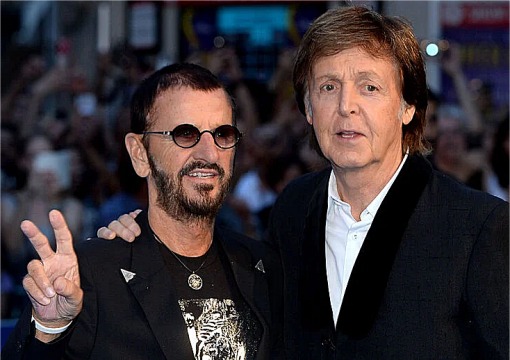
Look Out, Forbes…
If you have any doubt about Ringo's success, all you need to do is take a look at the drummer's net worth. The singer, songwriter, actor, and sales clerk from Liverpool is worth a whopping $350 million. Yes, three, five, zero. Though he is considered the 10th wealthiest rockstar in the world, Ringo is the richest drummer of all time.Surprisingly, his fortune wasn't solely amassed from Beatles memorabilia, although that was undoubtedly a contributing factor. Ringo also receives royalties from his film work and television appearances (his character on The Simpsons certainly made him a mint). Then there's Ring O' Records, the label he founded in 1975, and his endorsements with well-established companies such as Skechers. The sickly kid from Liverpool has done pretty well for himself, wouldn't you say?
28
Some Things Never Change
Though Ringo Starr is one of the most recognizable celebrities in the world, there are still some things from his childhood that always stay with him. Of course, his hospitalizations as a boy were somewhat traumatic, but a memory of his grandmother left an indelible mark. You see, the drummer was born left-handed during a time when lefties were forced to become righties. Ringo’s grandma was the enforcer when it came to using his right hand. Though her actions profoundly affected him, being the rebel he is, Ringo plays on a right-handed drum kit using his left hand.The poverty Ringo experienced in his childhood also left an indelible mark. At the height of Beatlemania, he struggled to embrace his newfound wealth. Ringo didn’t trust the money would make its way to his pocket, so he insisted on being paid in cash rather than a paycheck.
29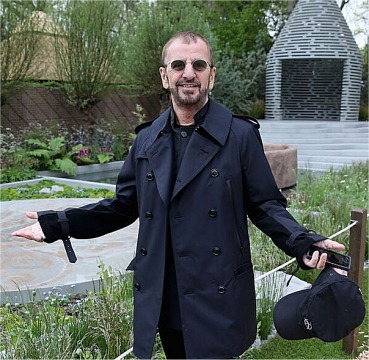
The Elephant in the Room
This following tidbit may not be suitable for delicate ears. Our beloved drummer, the legendary Ringo Starr, has earned himself a reputation. Not because he claims to be the inventor of the selfie, though that is a douchey move. The reputation evolved after a former fan on rocknerd.co.uk revealed Ringo told them to f**ck off when they were 11 years old.The comments varied, with most people excusing the drummer’s behavior. Some said the 11-year-old fan invaded his privacy, while others stated that Ringo is a germaphobe after spending so much time in the hospital. We do know the musician grew up in a rough neighborhood, avoiding interaction with others, so perhaps he has continued this survival technique throughout his life. We also know Ringo strives for inner peace, practices meditation, and lives a healthy lifestyle.
30
Reference:
